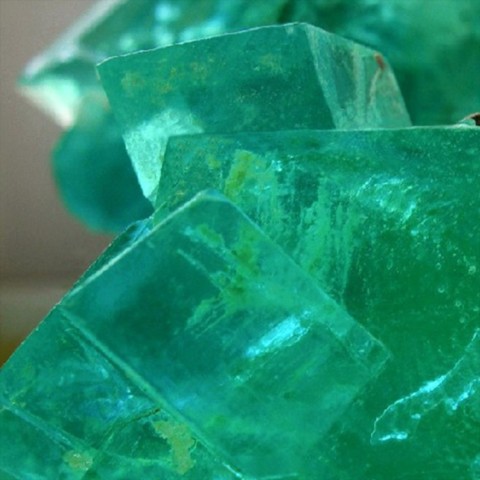MELANTERITE
Class : Sulfates, chromates, molybdates
Subclass : Hydrated sulfates
Crystal system : Monoclinic
Chemistry : FeSO4 7H2O
Rarity : Common
Melanterite is a hydrated iron sulfate that forms by alteration of pyrite and marcasite under very acidic pH conditions. It is a very fragile secondary mineral, difficult to preserve outside the acidic humidity of the mine galleries where it was born, due to its great solubility and its ability to dehydrate : in a dry atmosphere, melanterite dehydrates and transforms into an iron sulfate with five water molecules, siderotile, then oxidizes into copiapite and other iron sulfates. Melanterite is also known in lignite layers, often rich in iron sulfides. Its name comes from the Greek melanteria, a term designating the process of obtaining copper metal by cementation. Melanterite most often forms fibers, sometimes capillary, assembled into mats, encrustations or efflorescences, generally colorless to greenish. The concretions or stalactites, as well as the rare isometric or short prismatic crystals, have a green to emerald green color changing to blue-green. This blue-green hue generally results from the replacement of iron by copper (up to 19% CuO) : this is the pisanite variety. Melanterite is used in the manufacture of fertilizers, certain inks, disinfectants and is used in water purification systems. It is also used to a limited extent as a pigment and contributes to the conservation of wood.
Main photo : Melanterite from Aljustrel Mine, Portugal © Rui Nunes
Melanterite in the World
Twinning
No twin known for this mineral species.
Fakes and treatments
No fakes recorded for this mineral species.
Hardness : 2
Density : 1.89
Fracture : Conchoidal
Streak : White
TP : Translucent to opaque
RI : 1.470 to 1.486
Birefringence : 0.016
Optical character : Biaxial +
Pleochroism : None
Fluorescence : None
Solubility : Water
Magnetism : NoneRadioactivity : None





